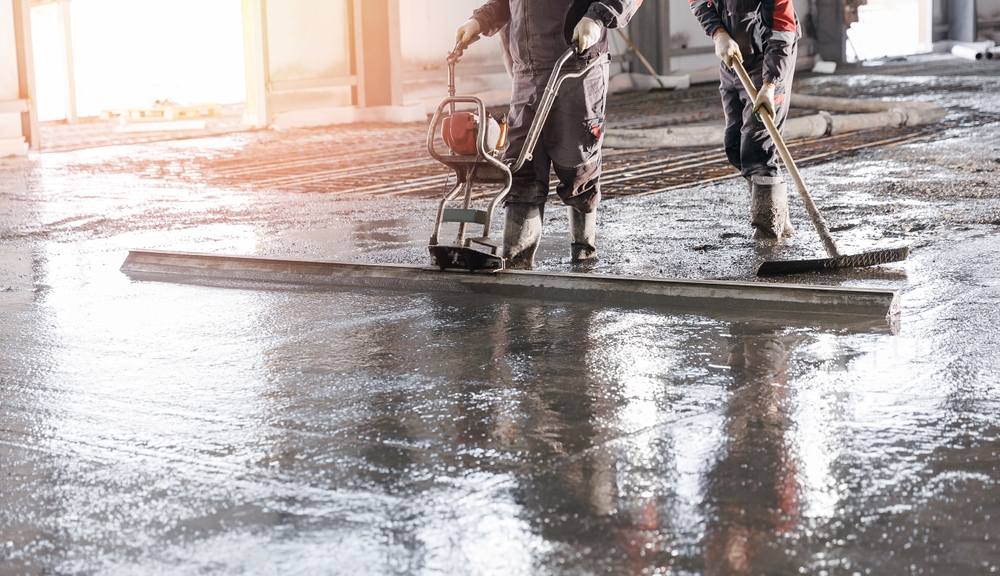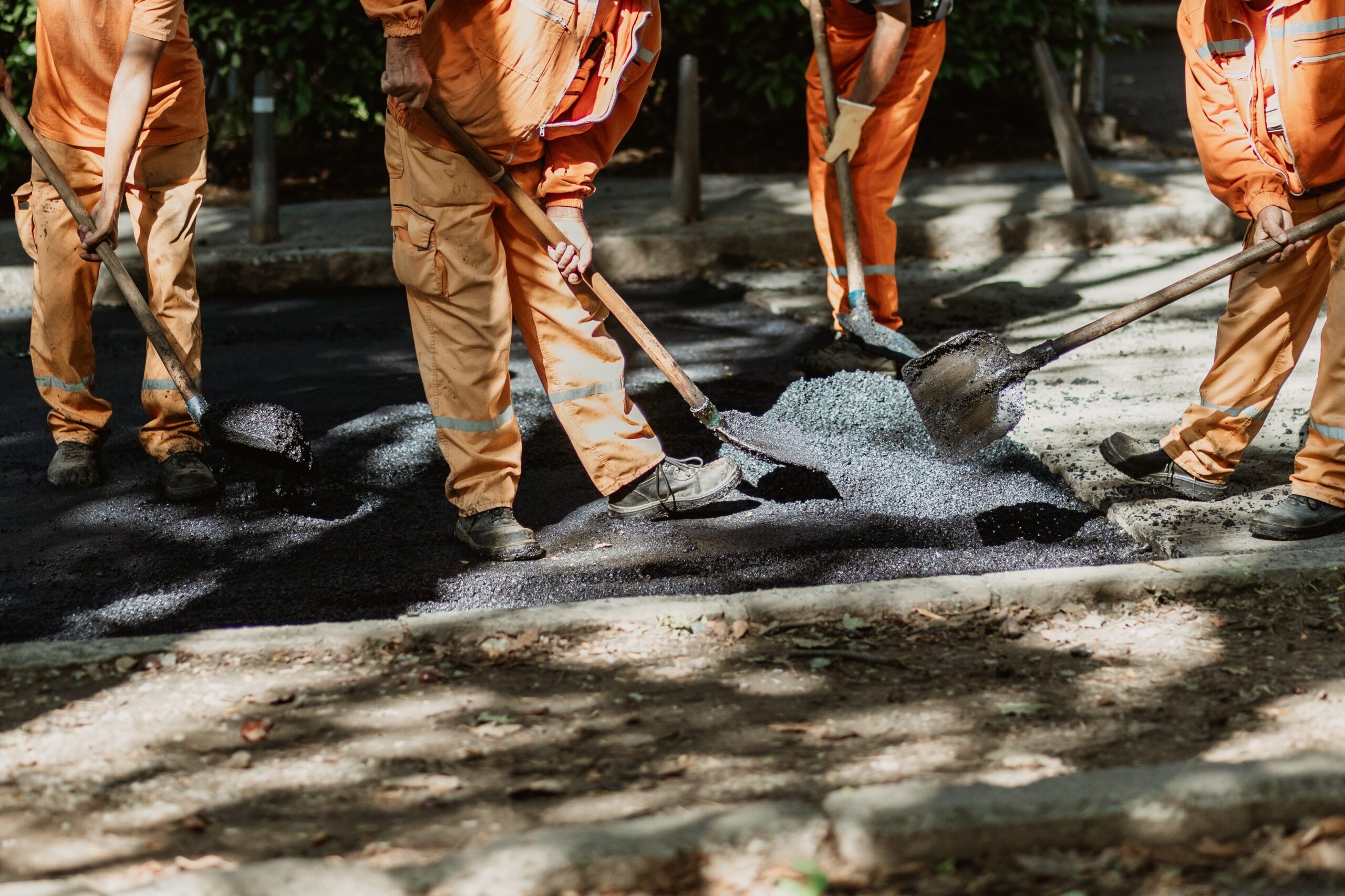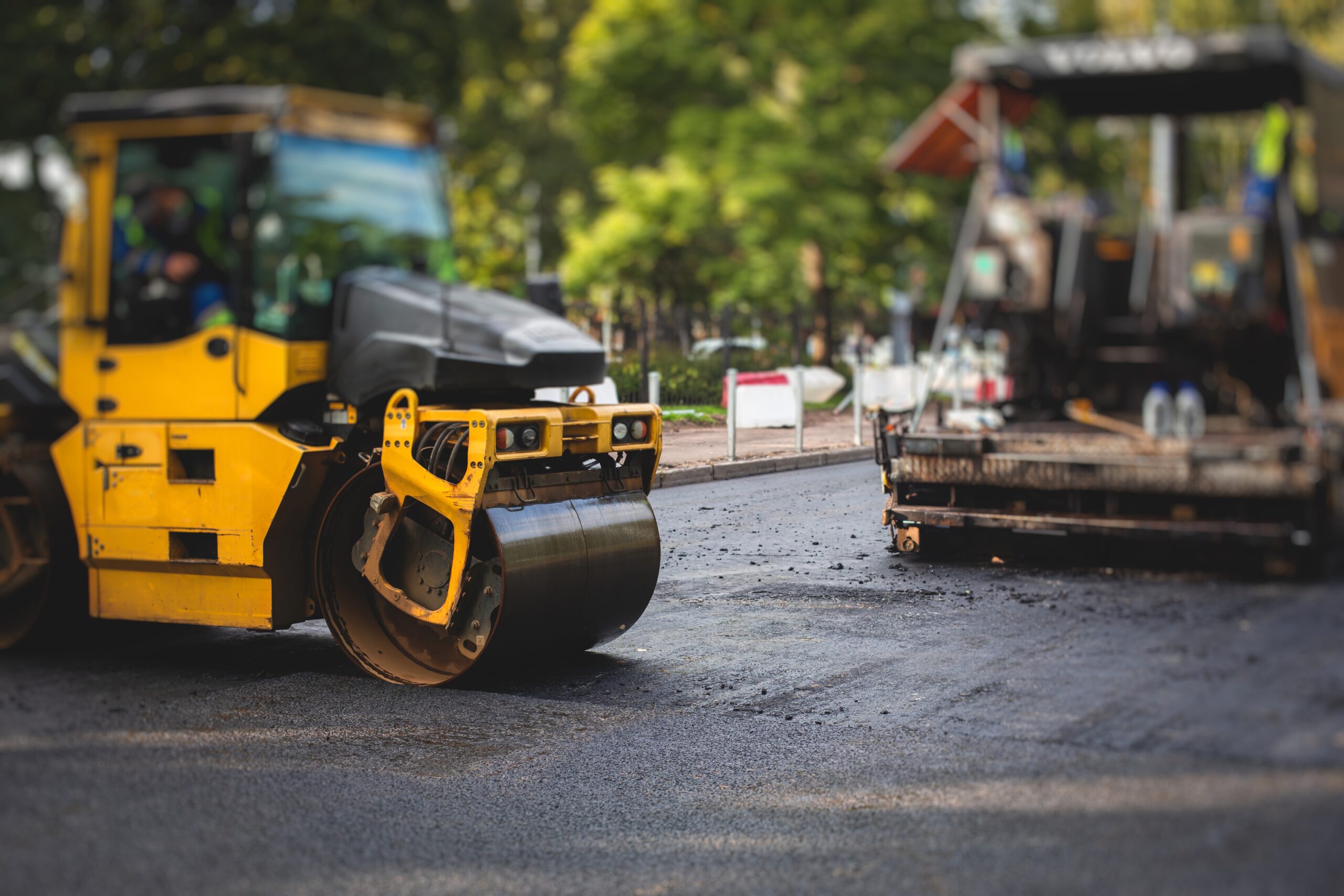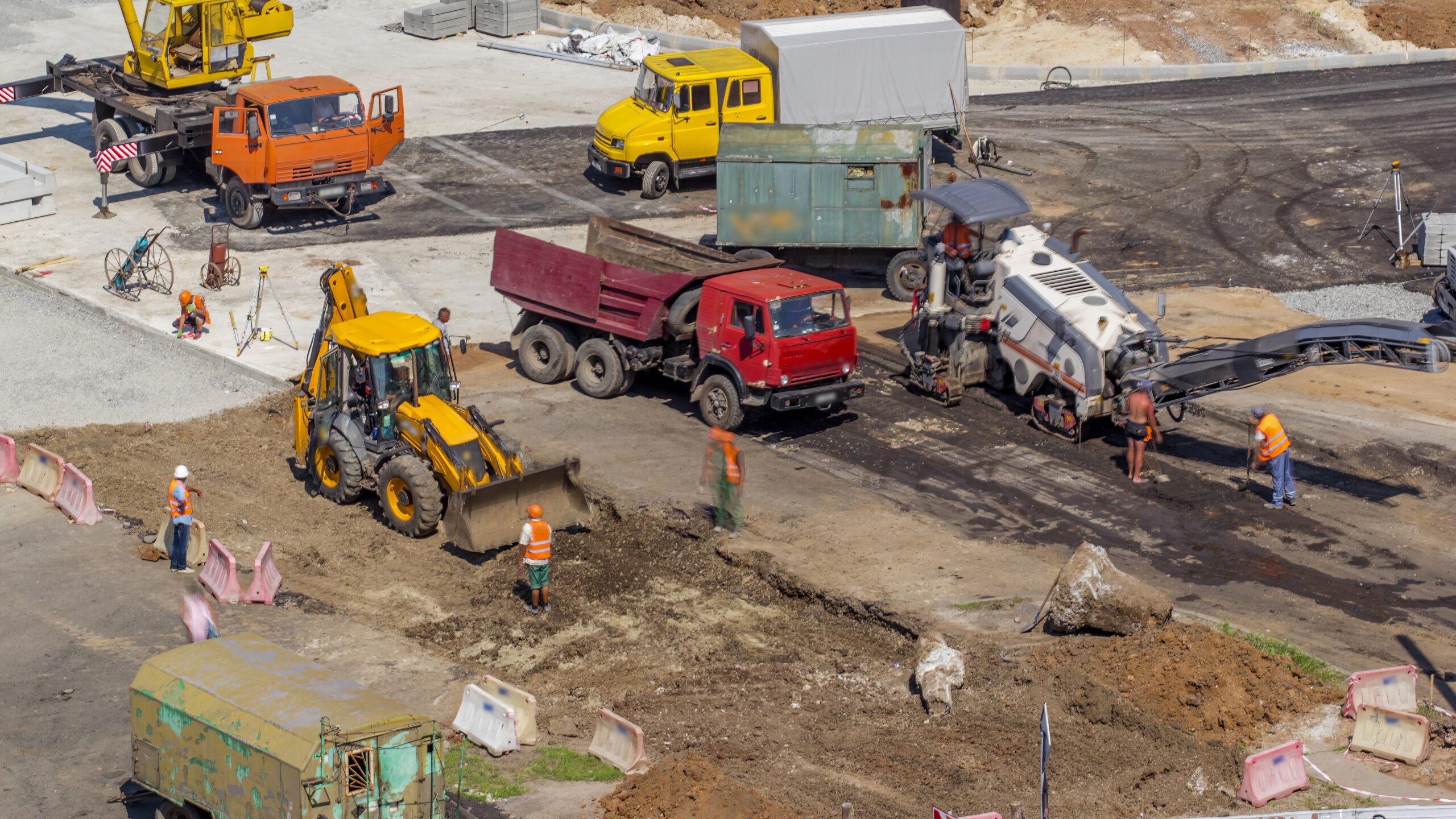When you plan a new warehouse floor or a home driveway, you face a choice in concrete. Choosing the correct type of concrete starts with understanding how it’s used.

Concrete for commercial buildings isn’t the same as that used for a home’s driveway or patio. The two may look alike at first glance, but they’re built for different demands.
Timing is a critical factor in the success of any paving job, especially for commercial properties where minimizing downtime is essential. Paving during the wrong season can compromise the mix and lead to premature failure, making it crucial to know the best time to pave commercial driveway.
Continue reading!
What is Commercial Concrete?
Commercial concrete is designed to handle harsh conditions and heavy use. You’ll find it in places like warehouses, parking garages, factories, and large retail spaces. This type of concrete needs to be strong enough to support heavy machinery, trucks, and constant foot and vehicle traffic.
It is typically poured thicker and reinforced with steel bars or cables to keep it durable over time. The mix itself often includes special additives to enhance strength, reduce cracking, and resist wear from weather and chemical exposure. In short, commercial concrete is designed to withstand demanding conditions.
What is Residential Concrete?
Residential concrete is what you see in driveways, sidewalks, patios, and garage floors around homes. It’s designed to support lighter loads, such as cars, bicycles, and pedestrian traffic. The thickness and mix are usually simpler compared to commercial concrete. Reinforcement might be limited to wire mesh or lighter steel bars.
The goal of residential concrete is to provide a solid, durable surface that looks good and withstands typical household use. While it still needs to resist cracking and weather damage, it doesn’t require the same level of strength or special additives as commercial concrete.
Now that you’re well aware of both concrete types, let’s examine how commercial concrete differs from residential concrete.
Commercial Concrete vs. Residential Concrete: How Are They Different?
While both commercial and residential concrete rely on the same core materials, such as cement, water, and aggregates, the way they’re formulated, reinforced, and installed differs.
Let’s break down the key factors that distinguish them.
Compressive Strength and Load Capacity
Commercial concrete is designed to withstand significant weight. Most commercial slabs are rated at 4,000 to 6,000 psi, with some exceeding that depending on the project. This strength is necessary for areas such as parking structures, warehouses, and industrial floors that support heavy equipment and experience high daily traffic.
Residential concrete, by comparison, usually ranges from 2,500 to 3,500 psi. That level works well for patios, sidewalks, and driveways. It’s strong enough for light vehicles and foot traffic, but not intended for the kind of stress seen in commercial environments. For most homeowners, this lower range strikes the right balance between performance and cost, which is part of knowing the cost effective ways to fix asphalt damage.
Mix Design and Admixture Selection
Commercial concrete mixes are intentionally more complex. They include a higher cement content and a lower water-to-cement ratio, which improves overall strength and reduces shrinkage. Contractors often add specialty admixtures to control setting time, increase durability, or protect against corrosion and freeze-thaw damage.
Residential concrete mixes are much simpler. They’re designed to be workable, easy to place, and budget-friendly. Air-entraining agents are common to help concrete withstand seasonal weather, especially in freeze-prone regions. Most home projects don’t require additional additives unless the design calls for decorative finishes or extra durability in exposed areas.
Reinforcement Strategies
Commercial concrete relies on stronger, more advanced reinforcement methods. The goal is to handle higher loads and reduce the risk of cracking over time.
Some common approaches include:
- Large-diameter rebar placed in engineered grid patterns
- Post-tensioning systems that apply tension to steel cables after the concrete sets
- Double-layer reinforcement for multi-story or heavy-traffic structures
In residential projects, reinforcement is simpler and focused on preventing surface cracks:
- Welded wire mesh is often used in driveways and patios
- Light rebar grids may be placed in garage slabs or thicker sections
- Reinforcement is usually placed closer to the surface to reduce shrinkage cracking
Slab Thickness and Structural Layers
Slab thickness varies significantly between commercial and residential applications.
Commercial slabs typically range in thickness from 6 to 12 inches, depending on the load requirements. These slabs typically sit on top of engineered sub-bases composed of compacted stone, sand, and geotextile fabric. The goal is to create a stable foundation that resists shifting, settling, and moisture intrusion.
Residential slabs are usually 4 to 6 inches thick. They’re poured over compacted gravel and may include a vapor barrier for moisture control. These slabs are designed to support lighter use, such as foot traffic and residential vehicles, without the need for deep layering or additional soil reinforcement.
Subgrade Preparation and Soil Stabilization
A solid subgrade gives commercial concrete the support it needs to perform well over time. In commercial work, the ground is compacted in layers to meet strict load-bearing standards. Geotextile fabric can be placed between materials to prevent them from shifting. Moisture barriers are often used to keep water from reaching the slab. These steps reduce settling and extend the life of the slab.
Residential concrete also needs a stable base, but the process is more straightforward. Most home slabs sit on compacted gravel. Depending on soil conditions and climate, a plastic sheet may be added to prevent moisture loss, a crucial step in a step by step guide to commercial asphalt paving projects.
Joint Layout and Crack Control
All concrete expands and contracts in response to changes in temperature and moisture. To manage that movement, joints are placed to control where cracks appear. In commercial projects, this involves a detailed layout using both control joints and expansion joints. The spacing is planned based on slab size, thickness, and traffic levels.
For residential work, the focus is on basic control joints. These are cut at regular intervals to help guide cracks along clean lines. Expansion joints are added only where the concrete meets another surface, such as a house or garage floor.
Surface Flatness, Levelness, and Finishes
In commercial work, surface quality often requires meeting strict tolerances. Contractors follow flatness (F-number) and levelness (L-number) standards, especially for facilities with equipment or racking systems. Finishes are usually functional, such as broom textures or polished surfaces, and may include coatings for chemical resistance or slip prevention.
Residential concrete is more focused on appearance. Smooth trowel finishes, stamped patterns, and a range of colored options are standard. Sealers are often applied to protect against weather, stains, and surface wear. While not held to formal tolerances, a clean and even finish is still expected.
Codes, Testing, and Quality Assurance
Commercial concrete must comply with national standards, such as those established by ACI and ASTM, and may also be subject to accessibility rules, including ADA requirements. Third-party inspectors often test slump, air content, and strength at different stages. Quality is tracked closely from mix design to final cure.
Residential projects follow local building codes, which vary by region. Inspections are typically limited to pre-pour and post-pour checks. Testing may be done on larger home builds, but it is not always required. Most quality control depends on proper placement, curing, and workmanship.
Cost Factors and Budget Considerations
Commercial concrete projects involve higher material volumes, more complex reinforcement, and specialized labor. Larger equipment is often required, and the site may need engineered prep work, all of which increases the overall cost.
Residential concrete is more budget-friendly due to lower material demand and simpler labor requirements. Contractors often use pre-designed mix plans to reduce costs without sacrificing quality. Tools and equipment are usually smaller, and the job timelines are shorter, which keeps labor costs manageable.
While both types require planning, the cost structure for residential jobs is more easily controlled.
Maintenance, Repair, and Longevity
Commercial slabs are expected to perform under stress for extended periods, making routine maintenance essential. These surfaces may need:
- Scheduled inspections to catch early wear
- Grinding to restore surface flatness
- Joint injections to seal gaps and prevent further cracking
Residential concrete is easier and less expensive to maintain. Homeowners typically deal with:
- Minor crack patching using concrete filler
- Resealing every few years to protect from the weather
- Occasional surface cleaning to remove stains and buildup
When properly maintained, both types of concrete can last for decades!
Frequently Asked Questions
What is the difference between commercial and residential concrete?
Commercial concrete is built for strength, durability, and heavy traffic. It uses higher psi mixes, thicker slabs, and stronger reinforcement. Residential concrete is simpler, used for driveways, patios, and walkways, and is designed for lighter loads.
What is the difference between high-performance concrete and regular concrete?
High-performance concrete is engineered to possess specific properties, such as high strength, low permeability, or rapid setting. It often includes advanced admixtures. Regular concrete meets standard structural needs without the need for performance-based additives.
What is the difference between concrete and industrial concrete?
Industrial concrete refers to heavy-duty mixes specifically designed for use in factories, warehouses, and other high-load areas. It’s thicker, stronger, and reinforced to handle machinery. Standard concrete is used for more general, everyday applications.
What is considered commercial concrete?
Commercial concrete is used in various structures, including parking lots, office buildings, retail spaces, and warehouses. It’s designed to support heavier loads, last longer, and meet strict building codes.
Know the Difference – Choose the Right Concrete for Your Project
Some slabs are built to carry forklifts. Others just need to hold up a patio set. Knowing the difference between commercial and residential concrete helps you avoid cutting corners where it counts.
These aren’t interchangeable materials; they’re built for different jobs, budgets, and lifespans. The materials, preparation work, and long-term demands differ, and treating them the same is where most projects go wrong.
At Asphalt Coatings Company, we don’t pour generic concrete. We match each slab to its purpose, its environment, and your expectations. If you want a surface that lasts, contact us before hiring the wrong contractor.
Reach out, tell us what you’re working on, and we’ll take it from there!



